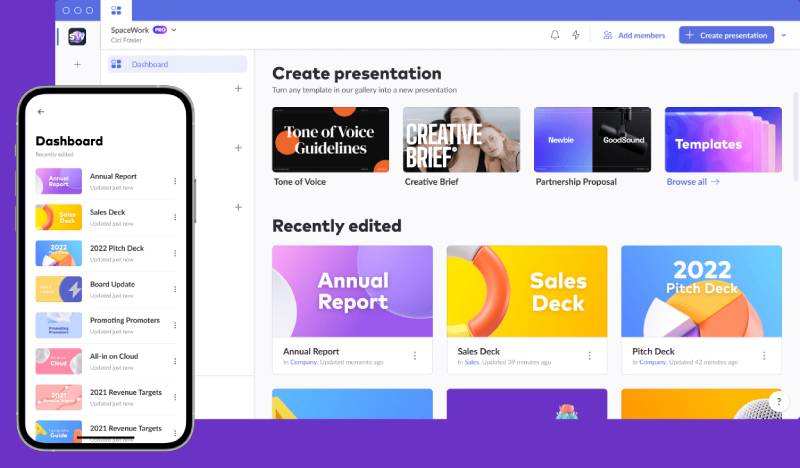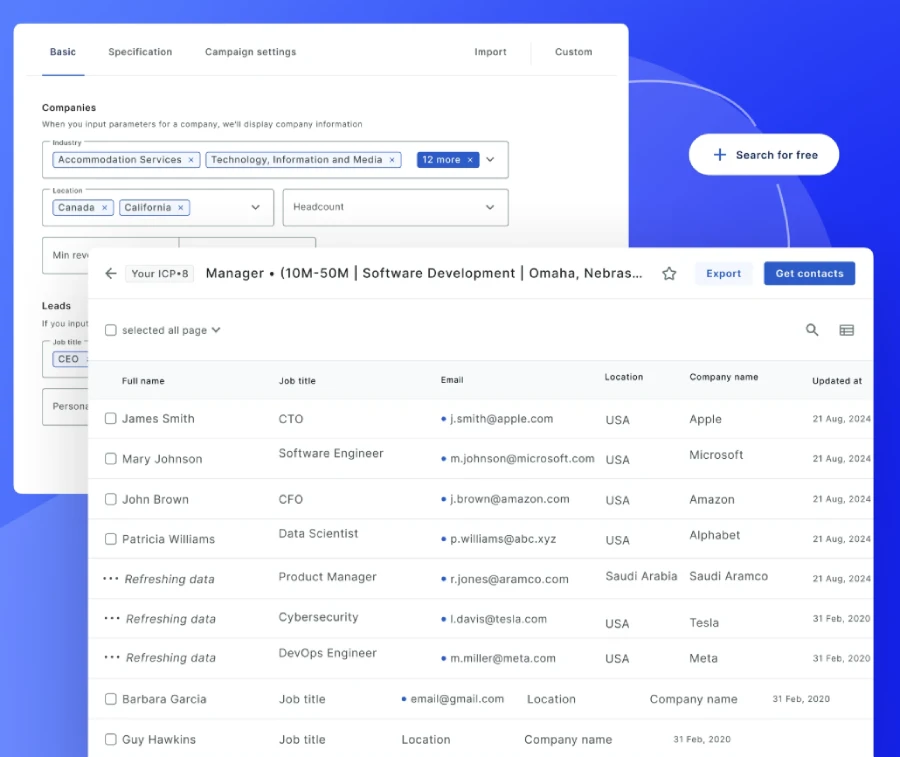
5 Ways To Make Captivating Slideshows For Your Employees
Presentations are a big part of doing business today. We use them to present our ideas to partners and customers, share information with team members, and even as part of the interview process.
The slides that complement our speech have transformed into a vital tool for businesses today. We use them to attract people’s attention, give a better explanation, and make data more memorable.
However, a presentation can only help a business if it is done well. A quality presentation can engage and inform the audience, as well as assist the presenter. Studies show that 91% of presenters are more confident if their slideshows are well-designed.
Who wouldn’t be?
If you have a versatile and compelling presentation, you can encourage your team to help you in fulfilling your goals. You can delegate tasks to them more efficiently, share important business data easier, and motivate them to work harder.
Proper communication is the best way to build a healthy company culture and in this article, you’ll learn how to communicate best through an amazing slideshow.
1. Use The Right Slideshow Maker
Creating slideshows from scratch is a lengthy and challenging process. In business, you will need to make presentations rather often, especially if you are a leader and need to motivate and inform your employees. That being said, the first and best tip we can give you is to find the perfect slideshow maker to facilitate this process.
If you are reading this article, it means that you have some information to share in a slideshow. That’s where Pitch comes into the picture. This tool helps users build stunning slideshows by offering professionally designed templates and a simple customization tool.
The slideshow maker will reduce the time you spend on your presentations in half. When you have a ready template, all you need to do is customize it. Even this is made easy with Pitch. It has media embed options, slide design tools, as well as intuitive collaboration features that facilitate teamwork.
Let’s say that you’ve picked a template in Pitch. ONce you do this, you can customize the brand assets, color schemes, fonts, add charts and photos, and much more. From reports and sales decks to marketing and fundraising templates, Pitch offers everything to help you impress and motivate.
This tool integrates with many others including Google Sheets, Google Analytics, and CSVs. This can simplify the process significantly and allow you to insert ready data into your slides. If you need to collaborate with others to create the presentation, you can do so with the in-app live video feature across mobile devices and desktops.
Chances are, you’ll need to create presentations for your employees often. When you have an account with Pitch, you can use the slideshow maker to reuse the same style and keep your brand’s image in all slides.
2. Create Separate Handouts To Complement Your Slides
Adding too much content or things that aren’t truly important is a common mistake. Yes, you can write whatever you feel is necessary for a presentation, but bulky slides will only demotivate your audience and make them lose focus.
Less is more when you’re presenting something in slides.
Think of slides as blank canvases where you can paint your guidelines and story. This is your chance to be a leader, and reading content from a screen does not make a good leader. Extraneous details do not belong in slides and good presentations.
Your slides should serve as a visual aid that complements your speech. If you fill them up with information, how do you expect the listeners to focus on what you have to say? Extraneous details will make it much harder for your audience to learn and follow your presentation.
To save time, many employers simply share their presentations with the employees, expecting them to memorize what they said or find their way around the information.
This is a big mistake.
If you have information that you’d like your employees to have access to while speaking or after you finish your presentation, you can create dedicated handouts. If you do the presentation right and include only the key points in it, you can’t just print it out or send it to the team and expect them to figure it out.
The handout should include a combination of your most important visual, the key messages in full sentence narrative, as well as some data you didn’t include in your presentation to avoid overwhelming them.
For example, you might be creating slides to tell your employees about new projects and sharing the tasks with them. That same presentation can speak of their obligations and the process of completing a task. While you won’t delve into details to save time and keep them engaged, you can insert the numbers and detailed explanation of each step in the handout.
This way, your employees can go back to the handout when they need to put that slide information into action.
3. Follow The 3-Act Structure Method
Have you ever heard of the 3-act structure method for presentations?
Now, not every presentation can fit into this structure, but it’s very useful for business slides. This structure will help you organize your slideshow and help you prep for your meeting. Let’s take a look at it in detail.
Act 1: The Introduction Setup
The first act is the place where you grab the attention of the audience. In these slides, you need to tell your employees what you expect them to do, what the purpose of the meeting is, and give them reasons to keep listening.
You have seconds to hook up an audience that is already busy and tired from working. So, don’t be afraid to open with a bang in your presentation. You are already their employer, so there’s no need to be salesy. However, to make them focused on what you have to say and get them on board, you need to make this part truly engaging.
Since this is a business presentation you’re making, jump right to the point. There’s no need to go around it – your employees are there to listen to your guidance, so let them know straightaway what the purpose of your slideshow is.
Act 2: The Middle Of Your Slideshow
The second act is the middle act, the place where you share the key information, tell people about your plan, share the guidelines, etc. This is where you tell people about your plan in detail, share some stats and data, and support your points.
Act 3: Prompt Some Action
When people leave the room after your slideshow, they should be motivated to create something, resolve a problem, or come closer to fulfilling your company’s mission. If you tire them during the presentation, they won’t really be prompted to take action.
This is your last chance to motivate them to work. The final act is where you remind them of the key purpose of the presentation, give them some final guidelines, and tell them where they can find the information they need to get the job done.
4. Treat This As A Conversation
Communication with your employees is very important. If you want to make people pay attention to what you’re saying, you need to engage with them. A great leader puts great focus on how they communicate, and slideshows are one way of doing this.
When you’re leading your meetings and talking about your slideshows, you can show some enthusiasm, passion, and personality to prompt people to be more active. Still, this will depend on what is on those slides. People will be seeing them, so you need to make them as conversational as possible.
How is this possible?
The idea is to insert information in those slides that don’t bore or overwhelm. There’s nothing worse than a presenter that lists information and facts and wants you to remember it all. When you’re working on those slides, create them as if you’re having a conversation with the audience.
5. Follow The 25-Minute Rule
The time of employees and business people is tight. Most employees as well as their leaders are pressed for time, so creating long slideshows and presentations is never a good idea.
The attention span of people can be short, especially when they are at work and have to deal with various tasks and obligations. This is why one of the best ways to create captivating business slideshows is to keep them short.
If your slideshow is lengthy, you will have to present it for a long period. Keep this in mind while working on it. You should add enough information to fill out 10 to 25 minutes of presenting. After that, you can use the time you have remaining to start a dialogue and see what questions your employees have about your slideshow.
Are You Ready To Create Amazing Presentations?
Now that you know these tips, you are ready to create amazing slideshows to share information and motivate your employee. This is your chance to get them more involved in the company’s work and boost its success as a result!

Tech-Savvy Tips for Enhancing Your Digital Infrastructure

Balancing Business Leadership and Travel: Tips for Success

Best ASP.NET Development Companies






